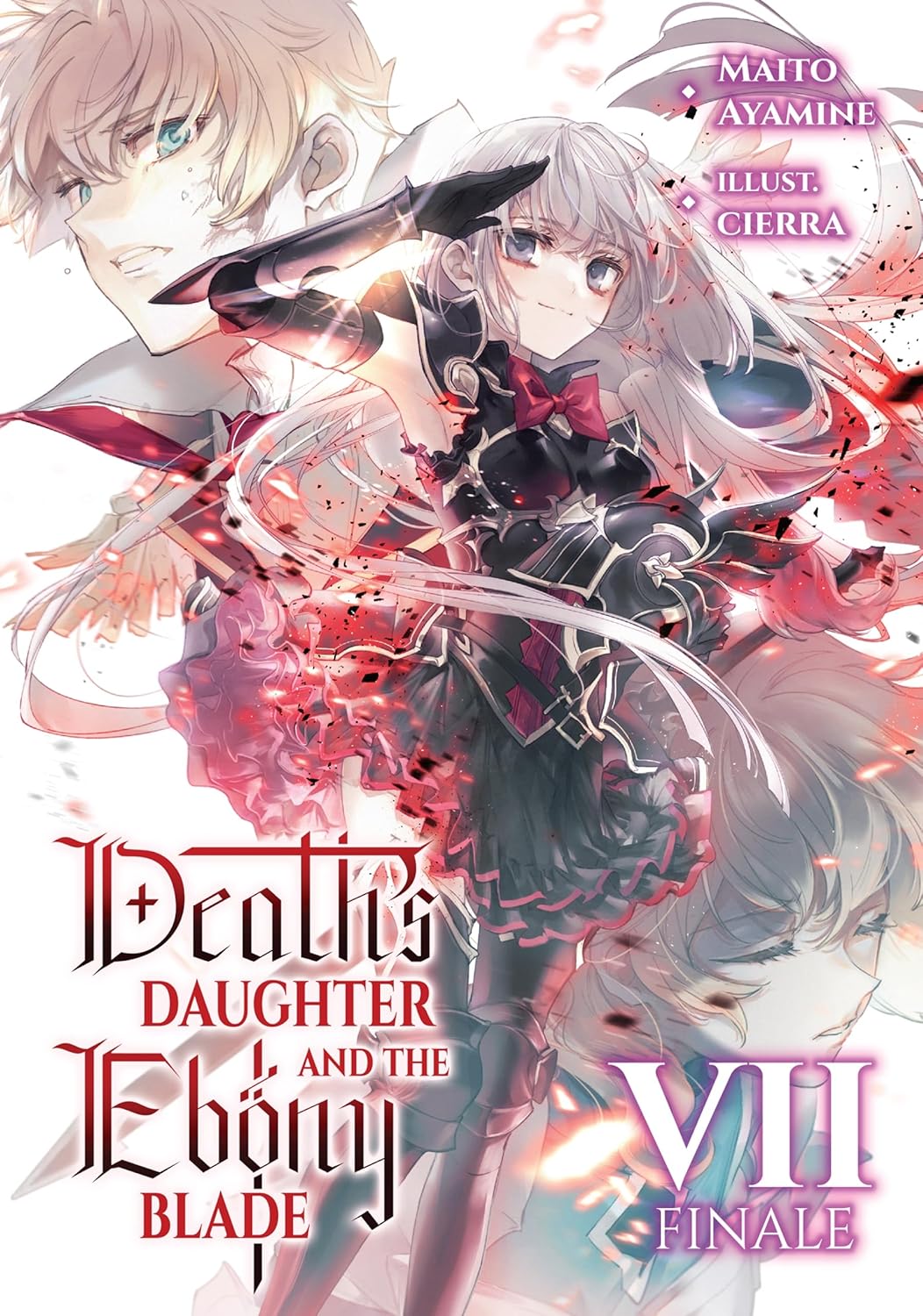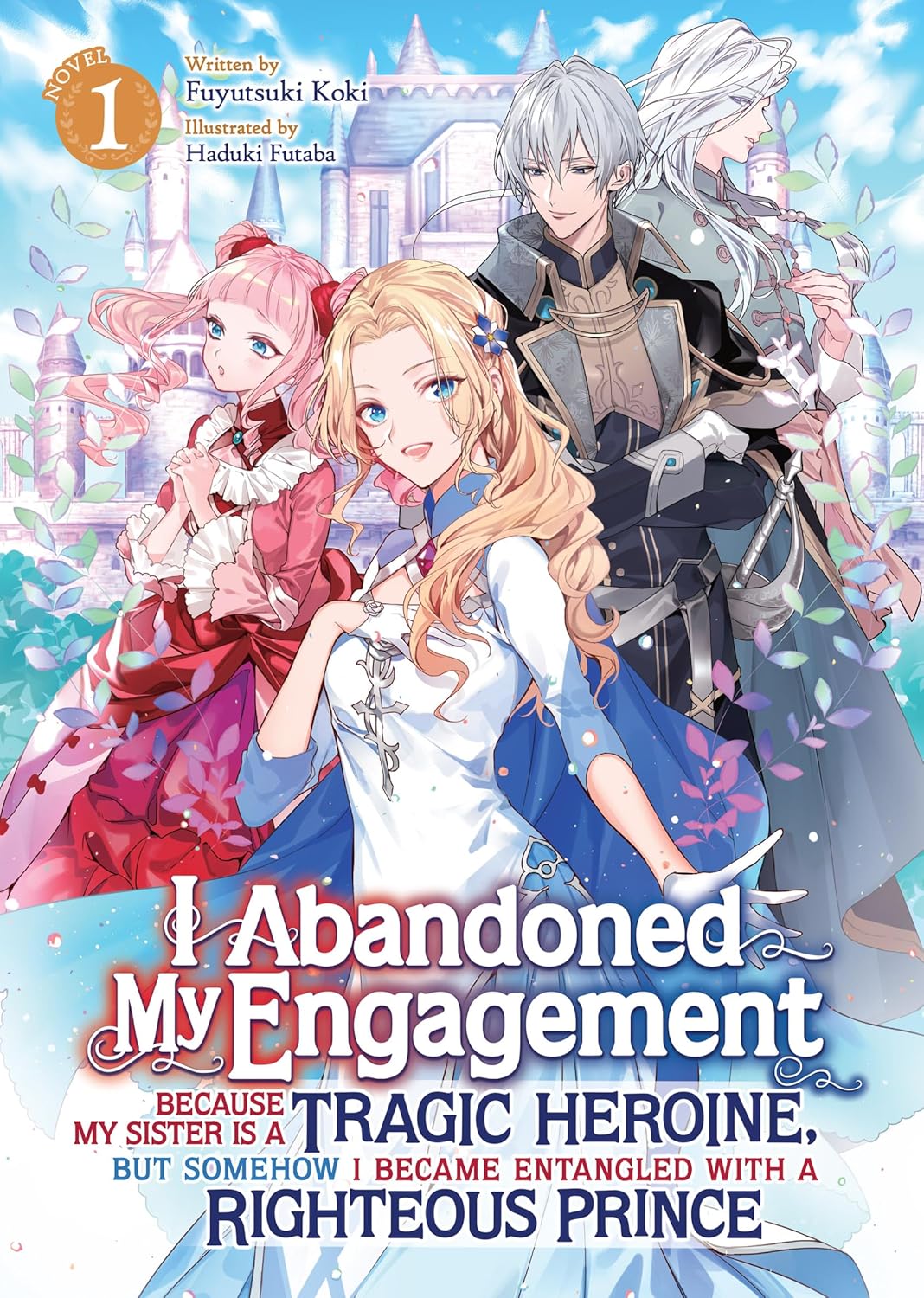By Maito Ayamine and Cierra. Released in Japan as “Shinigami ni Sodaterareta Shoujo wa Shikkoku no Tsurugi wo Mune ni Idaku” by Overlap Bunko. Released in North America by J-Novel Club. Translated by Sylvia Gallagher.
I’ll be discussing the final pages of the book, but only under the picture, so be warned.
Before we get around to how this series seems to love to lead me around by the nose, we need to, I suppose, address the fact that this is definitely the second part of Book 7, not a book in itself. I probably should have saved the two books and read them as one. If only as this is 95% fights, and I just don’t have it in me to talk about those. Wow, those undead really are hard to kill. Oh man, the goofy scientist is mortally wounded (and then never seen again). The large cast means that we have a lot of viewpoints to flit between, but I’m going to be honest, I don’t care about most of these people. I like them well enough, and wish them well. But in the end, I’m here for Olivia, Ashton, Claudia, and maybe Felix. If pressed.
Felix and his knights, along with the sleeping emperor, have defected to Olivia’s side in hopes that she can do something about the emperor (easy) and the man currently causing the undead to overrun the entire country (difficult). Fortunately, while they may not have Ashton anymore, they do have that old librarian from previous books, who also turns out to be a strategist, and she comes up with a plan: Fernest, Mekia, and Sutherland all join forces and offer a deal: one big battle against Darmes’ undead army, and if they lose they’ll surrender. Olivia knows he’ll take the deal, but that will also give her and Felix the opportunity to run straight for the castle to take out both Darmes and Xenia, the evil God supporting him. That said… they still have to fight scores of undead. No getting around that.
Even given the fact that it’s the second part of a 550-page book, this book is still badly paced, and needed an epilogue that was longer than the 4 pages or so it gets. I was starting to get a bit suspicious of the ending around 3/4 of the way through the book, when we see Claudia and company fighting valiantly but NOT dying tragically. If this book was going to keep going the way it had been, we needed a lot more death, and no, that one woman from Mekia doesn’t really count. Then at the end, when Olivia wins (yeah, sorry to spoil, but you guessed that) and she is told she can get one wish that’s anything she wants, I knew where it was going. So yeah, I was wrong. AGAIN. And it’s fine, I’m OK with it. I’d be a lot more OK with it if the epilogue was 20 pages rather than 4, and showed ANY of the other characters in the book. Which, um, guess that means I did care about people other than Olivia, Ashton and Claudia.
I think I’ve now run out of “military battle fantasy” series that I’m following, and this certainly was one. It’s worth reading for Olivia’s eccentric, striking personality, but also in seeing how much she grows and changes, particularly in the last two books after Ashton’s death. And she has only more room to grow.



